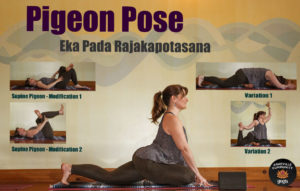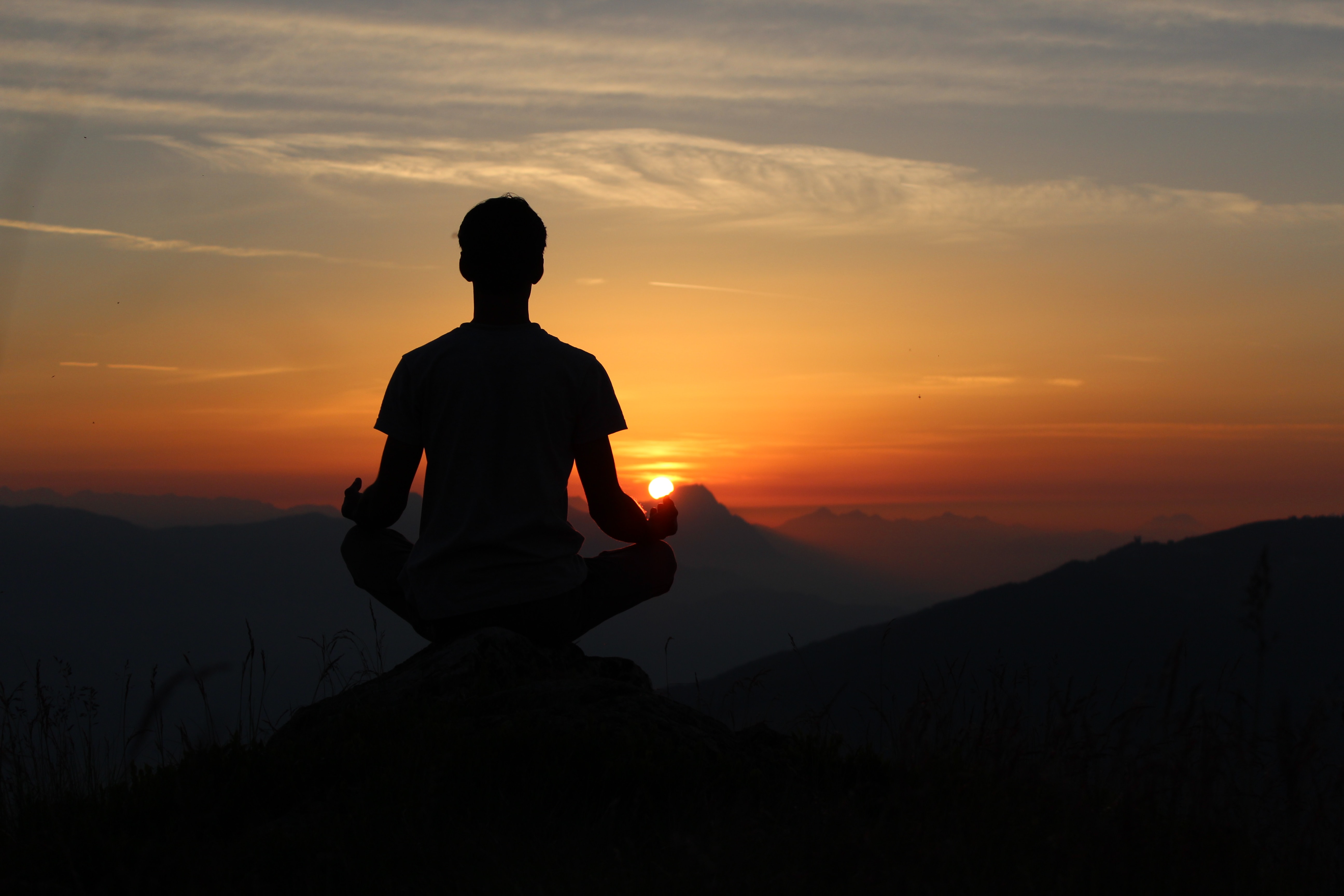 Our May Pose of the Month is Pigeon Pose, or Eka Pada Raja Kapotasana. Some hip openers increase the external rotation of the femur bone in the hip socket, and others lengthen the psoas muscle, which is the primary hip flexor that connects the torso and legs. Pigeon Pose is an extremely effective hip opener that addresses both areas, with the front leg providing external rotation and the back leg in position to stretch the psoas.
Our May Pose of the Month is Pigeon Pose, or Eka Pada Raja Kapotasana. Some hip openers increase the external rotation of the femur bone in the hip socket, and others lengthen the psoas muscle, which is the primary hip flexor that connects the torso and legs. Pigeon Pose is an extremely effective hip opener that addresses both areas, with the front leg providing external rotation and the back leg in position to stretch the psoas.
There are many ways to come into Pigeon. A very accessible option is beginning in Tabletop with the hands on blocks, stepping the right foot in between the hands, and then walking it over towards the left. You can also begin in Downward Facing Dog by lifting the right leg up behind you, bringing the right knee towards the right elbow, and then rotating the shin so that it is moving towards parallel with the top of the mat.
Arrive in the shape and check it out: the back leg is parallel with the long edge of the mat. Tuck the back toes and press through the heel to create more space underneath the body, then lay the top of the foot back down and ensure that the toes point towards the back of the mat. Take a moment to ask yourself: how does this feel? If you are uncomfortable (particularly in the right knee!) you may bring the right heel closer into the pelvis. You may also slide a prop underneath the right hip.
Press your fingertips into the floor beside you and lengthen up through the spine. Draw the back leg side of your belly toward the front leg side (instead of trying to yank your hip around, move from your belly), and engage the muscles in the back of the left leg. This will point the torso more “square” to the front.
In Eka Pada Raja Kapotasana, unless your front shin is totally parallel with the front edge of your mat (something that’s not feasible or comfortable for a lot of practitioners in this pose), simply flexing the foot causes it to sickle inward, which puts the ankle and knee at risk. Instead, point your foot but flex your toes back (this is sometimes called “flointing” because it’s basically a cross between flexing and pointing). As you “floint,” draw your pinky toe back and reach out through the ball of your big toe. Press the pinky toe side of your foot into the floor to lift your outer ankle away from the floor. By activating your toes in this way, you engage muscles that keep the knee safe. Keep drawing the left side of the belly toward the right, and pull your right hip crease back so that your pelvis stays level and stable.
A modification for this posture is Sucirandhrasana, or Supine Pigeon. To come into this modification, lie on the back with the feet planted on the floor and the knees pointed upwards. Stretch the right foot up towards the ceiling, flex it, and then cross the ankle over the left thigh. You can stay there, or you can pull the knees up by interlacing the fingers behind the left thigh.
Wherever you land in your version of Pigeon ask yourself another question: where can I soften? Oftentimes when we come into deep hip openers we tighten up in other parts of the body. Try loosening the jaw, unfurrowing the brow, and relaxing the fingers. If you are comfortable folding forward, consider the fold as a bow: a bow to sensation, even a bow to the present moment. When you move to the second side, try to use this opportunity to be as non judgmental as possible. Hips are infamous for being asymmetrical carriers of tension, so be soft with yourself and try to truly focus on the sensation you are experiencing as opposed to the way that the posture looks.


